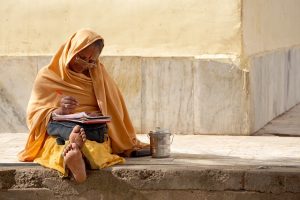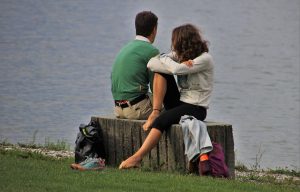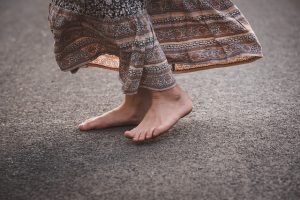My strong friend shared with me about using firm surfaces for walking, sitting, and sleeping to help the body be strong and avoid health issues of poor alignment etc.
I’ve begun implementing these strategies with some success and am excited about these prospects of natural health.
Here are some insights:
The tissues (overwhelmingly bones, muscles, skin) will develop a tolerance–which can accurately be called strength–for sustained exposure to firmer surfaces, a lot like the tissues in the feet will develop a tolerance for sustained exposure to the ground while walking barefoot. (FYI in both situations this tolerance or strength is more than just additional hardness/callouses–callouses are superficial and meant to be temporary while deeper, more biologically dynamic strength is developed.)
One can develop the strength as gradually as one needs to.
Standing, sitting, lying–the same goes for all three positions. The body wants a surface which is: 1 firm 2 flat and 3 perpendicular to gravity. With that type of foundation (we might call it a Firm Foundation) the body will naturally gradually move into healthy alignment, which is where all the muscles can work easily. With squishy, soft foundations–as alluring as they may seem in the moment at the mattress store or the furniture store or the shoe store–the body contracts into various misalignments/imbalances where all the muscles have to work much harder to do the very same thing.
It is challenging but worth it. The good news–there is lots of good news but some of the good news–is that efforts and progress for one of the positions helps advance progress in the other two.
Firm allows your body to spread out to increase flow. More flow means your blood but also your nervous system can work.

A Firm Foundation: Walking
For strengthening the feet, one might for example proceed from conventional shoes to flat soled shoes to moccasins to bare feet.
Anything tight you wear pinches the body, lymph is right under the skin, it cuts that off.
Barefoot is best, moccasin is next. But gravel wears them out quick.
The foot has 30 muscles. They want to work. You do need to keep an eye out for glass barefoot but that is rare, and pokey weeds are easily removed and do minimal damage.
Walking on carpet is ok for the foot if it isn’t too squishy.
Barefoot allows electric flow. Grass soil even concrete the electrons flow to get rid of excess electrons or get needed electrons. The ground grounds is, shoes cut us off.
See vivobarefoot YouTube channel
See Zach Bush MD
Try Hobibear
Try vivobarefoot (expensive)
Lookup barefoot shoe for something that protects but doesn’t enable.
Try the “sock shoe”
Note- moccasins seem ideal as they use no toxic plastics.

A Firm Foundation: Sitting
For sitting, one might go from 25 percent of sitting time on a stool to 50 to 75 to 100 percent.
Similarly one might gradually eliminate arm rests and back rests.
Train yourself to situp straight, at first you’ll fall down but you’ll get it.
Stool is best, no back or armrest.
A Firm Foundation: Sleep
For strengthening all the tissues involved in lying flat on firm ground, one might go from a conventional mattress to a firm mattress to a thick floor bed to a thin floor bed.
Muscles want to push back, soft bed they can’t.
Sleep on your back.
Pillow not too big, don’t want prop head much. Get feather pillow and cotton case. If not organic pillow, wash it.
Beware sleeping on carpet. Carpets have plastics, they erode into micro plastics, toxic. Carpets have toxic fire-retardant chemicals.
Workout while you sleep, excellent!
A friend of mine purchased this buckwheat mat for a bed and loves it, though it isn’t local
https://ecohealthlab.com/product/organic-buckwheat-hulls-mustard-mattress/#comment-5029
https://youtu.be/BMNgSDEwp24?si=-N7XCep6yfc1gF2n
see Dr Mandell on floor sleeping
Super sore back? You potentially went too firm too soon.
The spectrum runs from super soft mattresses (terribly unhealthy–the body will contract into all kinds of misalignment) to the bare earth (very healthy, will shape the body into healthy alignment, but not easy to get to).
It is the same with shoes, chairs, and beds–just go with the firmest you can, and work your way along the spectrum from there.
Apologize to your body for all the ways you have exercised your agency to make it weak and misaligned.
Moccasin Shoes
Try
https://www.etsy.com/shop/thecraigpaul
https://www.etsy.com/shop/gulioldwestdesigns/?etsrc=sdt
Contact Michael Guli: Call 970-221-2992, Mail PO Box 127, Belivue, CO 80512
https://birchbury.com/
Leather barefoot shoes, sturdier than moccasins not quite as good as moccasins but still pretty good. Also see the free print out sizing chart.
Minnetonka Men’s Leather Laced Softsole Moccasin https://a.co/d/fWppDYg
This could work too.
Shoes can’t pinch the toes together. The toes have to be able to spread out for the foot to function healthily. If the shoes pinch the toes together, they’re definitely not worth keeping.
A toe box wide enough for _your_ foot is key.
The nice thing about moccasins is they form to your foot (rather than forcing your foot to form to the shoe). A few wearings and they are customized. Use water to break them in. They may feel too stiff or tight at first. Try spraying them with a mixture of 1 part rubbing alcohol to 2 parts water, then running in them, and they’ll form to your foot.
Keeping dry in moccasins:
If you go barefoot, your feet dry off pretty quickly.
If you feel like wearing shoes at that destination is important, you can carry the moccasins to the entryway and put them on as you go in. Alternatively you can put the moccasins on in the car and try to step on all the driest spots between your car and the destination.
If you keep a pair of moccasins and a pair of shoes and socks in the car, you’re flexible.
When buying the moccasins you shoot for an exact fit and then they will readily stretch / self-customize as needed. Avoid concrete and asphalt in order to prolong their life (and ask “do I need my moccasins now or would barefoot be fine?”). That said, don’t be afraid to wear them out! Buying and re-buying moccasins is so much less expensive than dealing with all the health problems caused by conventional footwear.
To go barefoot you have to be careful about each footstep. That is pretty hard to do over a long hike (and pretty much impossible while watching children). Only hike barefoot on short hikes, where you are confident what the trail will be like. When the hike is long or when you do not know what to expect from the trail, wear moccasins.
Note – special thanks to Jared Crocker for teaching me about this.


